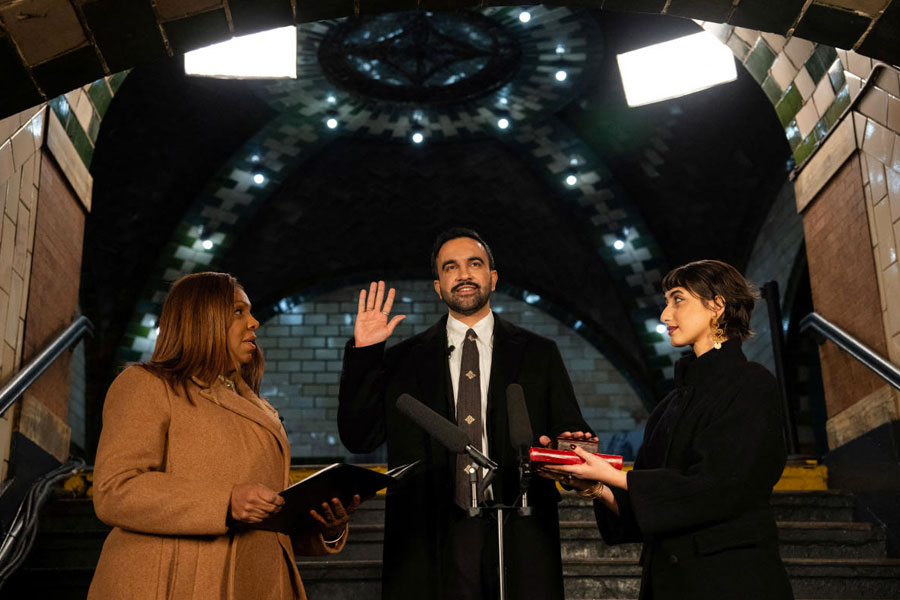
John Milton's Areopagitica (1644) is one of the earliest essays in defence of the freedom of the press and against preemptive censorship. Since then, it remains a symbol of assertion of freedom of articulation, and its underlying principle that decisions in a State must be based on open discussion among its citizens, without authority interfering with the flow of information. Much in the spirit of republicanism, political unity must be secured by a consensus that respects diversity of opinion, and not by coercive homogenization. Milton wrote: "He who destroys a good book, kills reason itself". Abhinav Chandrachud's Republic of Rhetoric: Free Speech and the Constitution of India quintessentially restates that position.
His book comes as a possible unintended sequel to Sahamat's The Republic of Reason: Words They Could not Kill: Selected Writings of Dabholkar, Pansare and Kalburgi and Utsa Patnaik's The Republic of Hunger & Other Essays. Evidently, all the three are powerful critiques of the denial of entitlements under a new Constitutional regime of rights, including a right to a republican frame of everyday living with provision for food, for rational thinking and for unhindered freedom of articulation for everybody, whatever is her or his social location in the network of interlocking inequalities that India is.
The principal thesis in Republic of Rhetoric reads: "The enactment of the Constitution made only a rhetorical change, not a substantive one, to the right of free speech in India." Freedom of speech and expression is rightly located as a critical medium in the agenda of radical social, economic and political transformation of Indian institutions, practices and character, envisaged in the Constitution. But the imperative of maintaining public order in the face of transformative interventions acknowledged in course of contentious debates in the Constituent Assembly led to continuity with the restrictive colonial discourse on citizenship freedom with four broad institutionalized exceptions: 'defamation, contempt of court, obscenity and speech which threatened the existence of the State'. The exceptions have been subsequently extended by the addition of new grounds of legitimate restrictions, namely, 'public order, 'friendly relations with foreign states', and 'incitement to an offence'. The baskets of 'reasonableness' and 'unlawful activity' remain intriguingly open forever for incorporation of new restrictions. Designed to contest government's inroads to the Constitutionally guaranteed set of freedoms, the right to free speech suffers both in the hands of national and sub-national governments as well as non-State actors like employers and vigilante groups. The author might have invigorated his argument by referring to denial of free speech of vulnerable citizens and marginalized groups through 'freedom' of uncivil expressions by politicians in power or out of it.
In a densely and variously illustrated examination of the provision for the right and its violations, the author begins where he is preordained by his thesis: with an analysis of the law of sedition in British India, with particular attention to restrictions on the press. Throughout the critical exposition, the authors refer to colonial provisions, important legal cases and experts on Constitution and laws in post-colonial India and in the West - all in a thick description of life and times of freedom of speech in India.
Retaining the statist-juristic frame, the author brings in issues of indecency: 'buttons' (unfastened) and 'buttocks' (exposed) both dealing fundamentally with the right to freedom with one's own body which provokes the complex negotiations with relativising modernity. Body is the new venue for the 'prudes and prigs' to pry, provoking the author to comment that "obscenity lies in the crotch of the beholder". The author might have drawn our attention also to the minimality of legal concern with the travails of countless labouring bodies in the informal economy.
Despite Indian judiciary's defence of citizenship freedoms, it continues to enjoy 'excessive powers to punish contempts that scandalize the court' which need to be limited to cases 'which take place in the face of the court'. Among the instances of excess cited by the author is the Kerala High Court-Supreme Court judgment against E.M.S. Namboodiripad's accusation that, 'dominated by class hatred, class interests and class prejudices', judges would favour 'a well-dressed, pot-bellied, rich man', and not 'a poor, ill-dressed and illiterate person'. The author criticizes the Supreme Court for its excess because 'the speaker seemed to be making a political point more than anything else'. He would probably recall that in his dissent to the U.S. Supreme Court justifying restrictions on the Communist Party of the United States, Justice Black cited Areopagitica. (Communist Party of the United States versus Subversive Activities Control Board, 1959-60)
On the statist perversion of the ethics of judiciary, the author refers to Nehru's widely notified apology in 1959 to Justice Vivian Bose for commenting that Bose lacked intelligence in his 'fantastic proposition' that the LIC made an investment of about Rs. 1.26 crore in Mundhra entities violating the requisite procedures 'in return for generous donations made by Mundhra to the Congress Party'. 'These were before [the] days when judges were punished for displeasing the [government].'
Chandrachud's book is an engaging one. Maybe, some day he would look beyond legal restrictions to free speech and locate its enemies in little everyday fascism. Élisabeth Roudinesco, a French academic historian and psychoanalyst, sensitizes us about a 'little fascism, which... slips inside each individual without his realizing it, without ever calling into question the sacrosanct principles of the rights of man, of humanism, of democracy.' This molecular and micro-political power is invisible and inaudible, except to the perceptive person; hence usually immune from contestation and resistance. The struggle for the republic must be comprehensive.











